I spent a lot of time travelling through Rajasthan, Agra and Varanasi in the winter of 2012-13. In some visits, the focus was all-round photography in the city and in some occasions we wandered the streets aimlessly, holding a camera. Here is a collection of images from the streets, taken during these and earlier visits.
—
The narrow lanes adjoining the ghats in Varanasi offer unlimited street photography opportunities. A part of people’s lives here is lived outside four walls, and they are more often than not happy to share their way of life with strangers. Shops and working spaces in the lanes have an amazing diversity that is perhaps not seen anywhere else in the world in such a small place. Sweet shops, silk handlooms that work in very tiny spaces where you can barely step in, vendors on bicycles crisscrossing the tiny spaces, chai shops, guesthouses, grocery stores, lassi shops, statue-makers,… the list is endless.
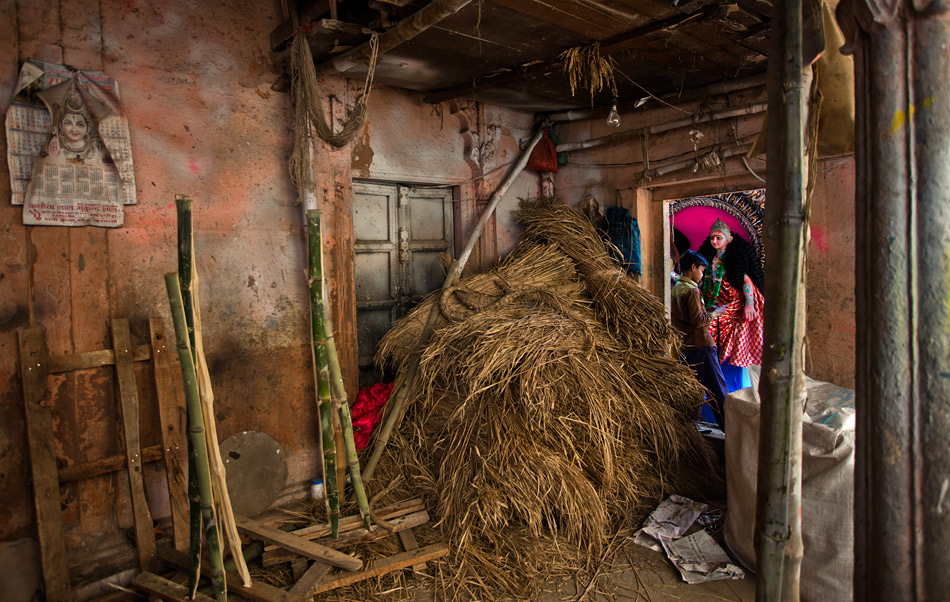
A goddess in the making..
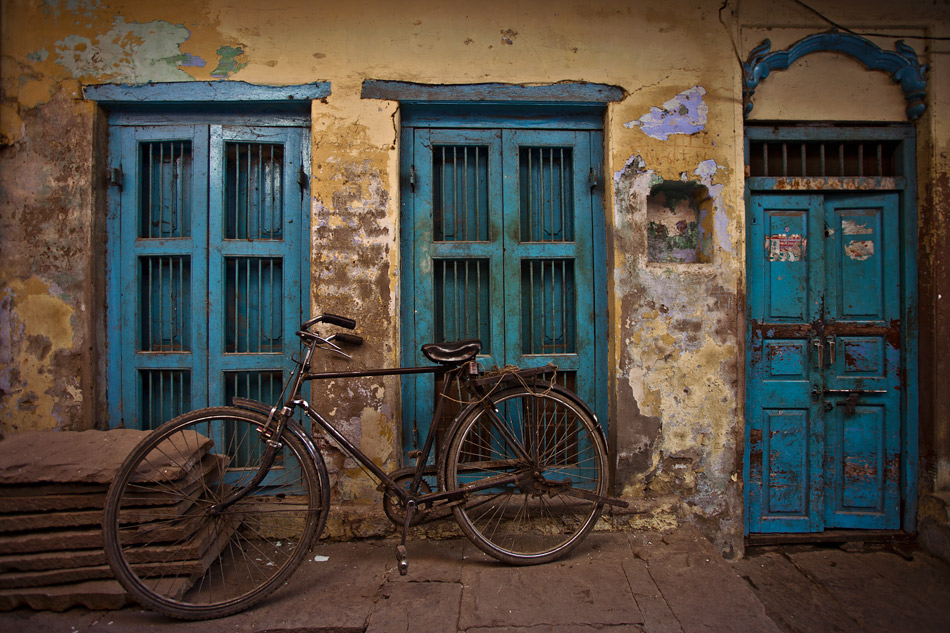
Aging wheels and an aging wall. Bicycles are a convenient tool for crisscrossing the incredibly busy traffic and constrained spaces of Varanasi.
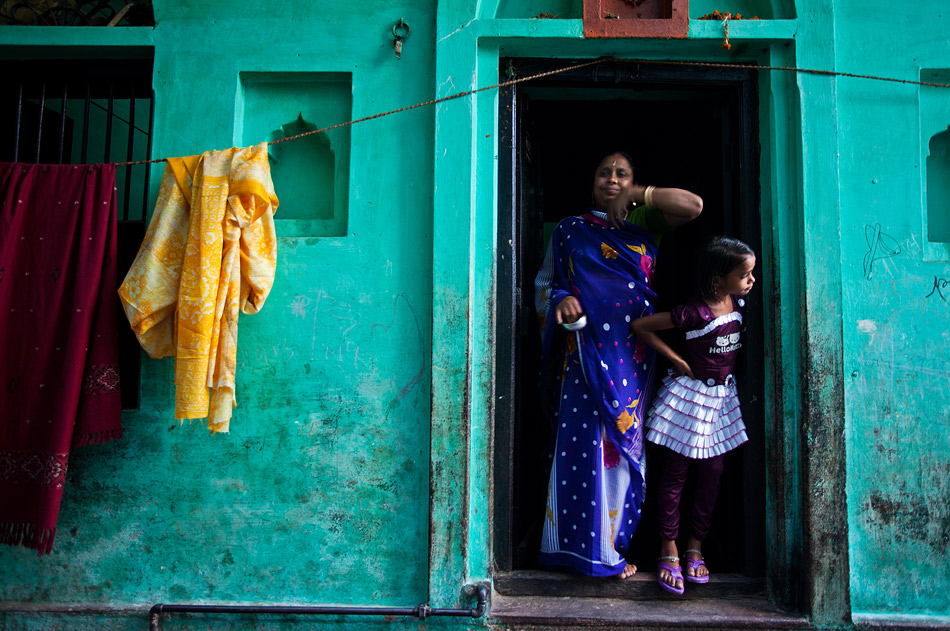
Time to go to school, but friends have not yet arrived..
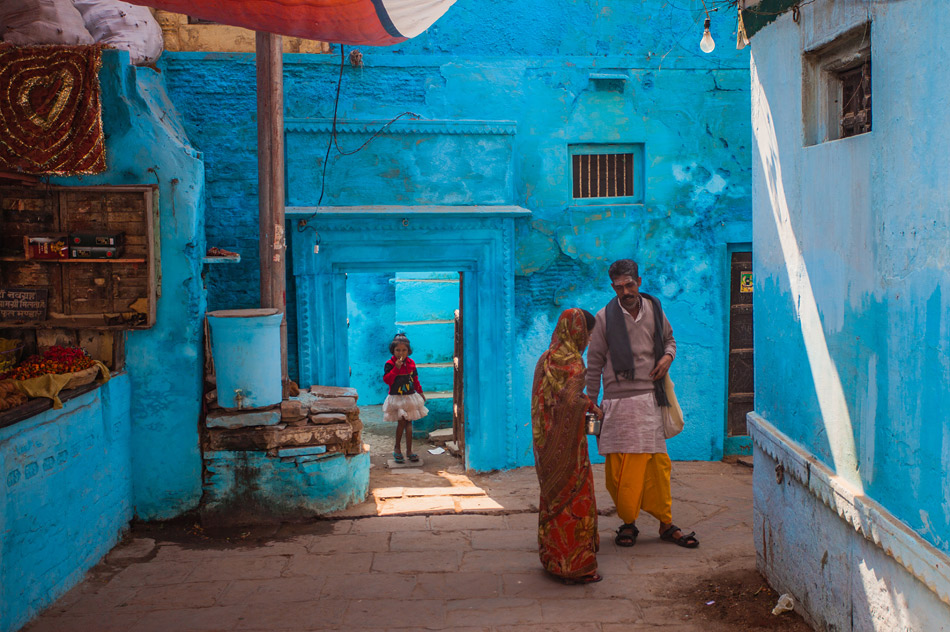
Shy, curious..
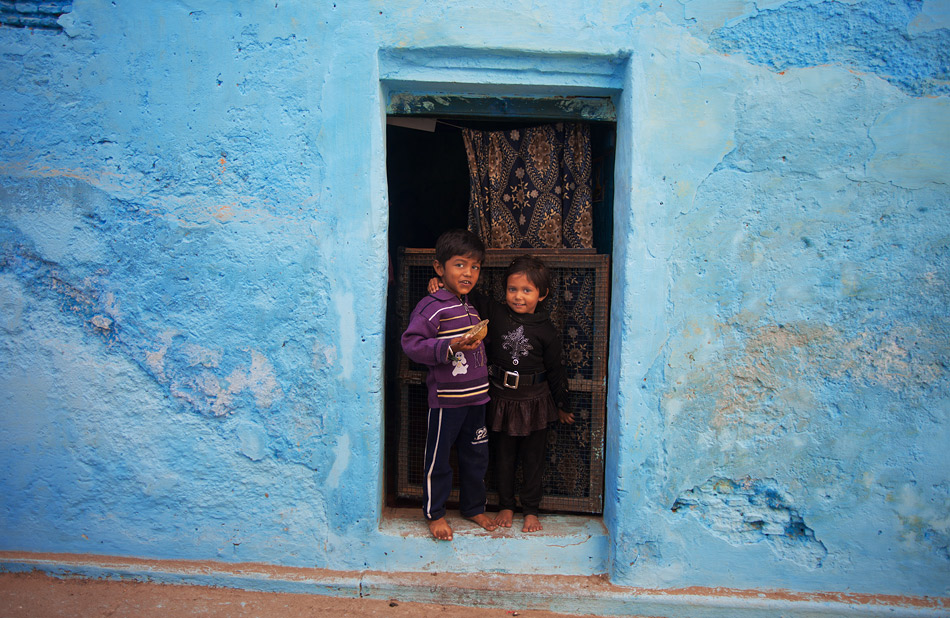
Shy, happy..
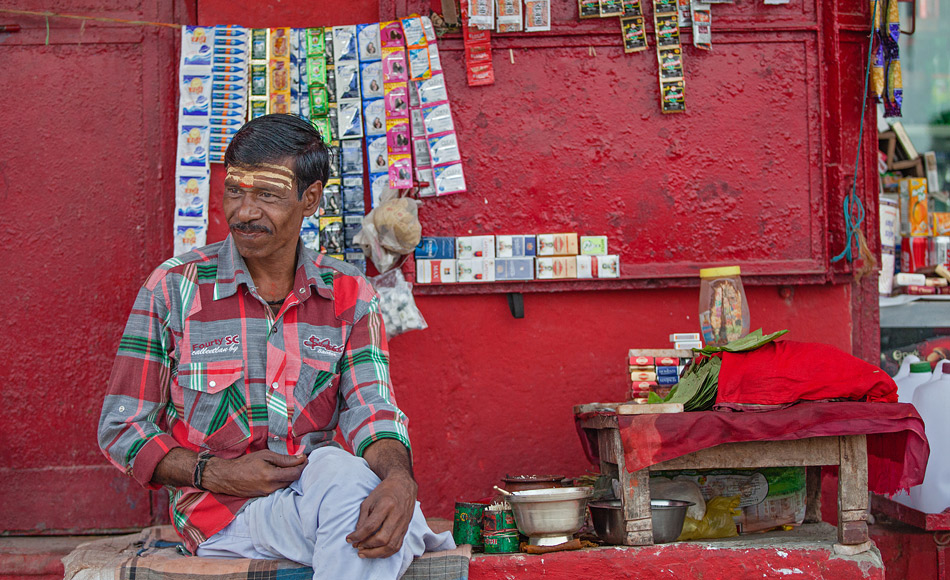
Red! lips, shirt and the wall..

Every second shop in Varanasi seems to specialize in some eatables. Savouries, tea, lassi,..
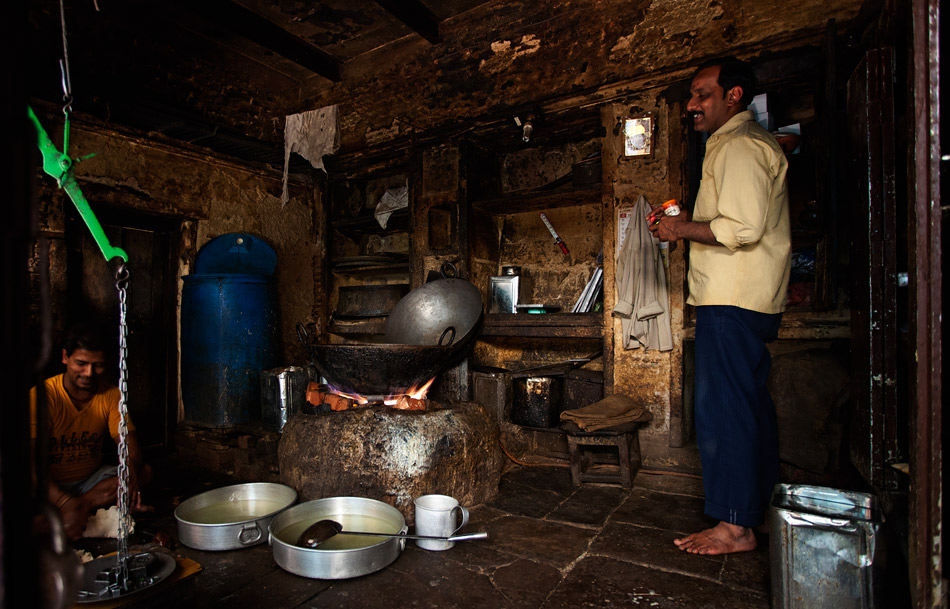
Smiles laced with sugary stuff..
While the diversity of Varanasi seems to be confined to narrow patch of a few kilometers length, the entire state opens up to myriad possibilities in Rajasthan. The old never seems to fade though the new continuously attempts to change the system. In Jaipur, the old city area still mirrors much of its past – its pink facades, turbans, big moustaches, old temples and monuments haven’t yet lost there space to tall glass facades.

Life outside the famous Hawa Mahal, Jaipur. The means of mobility may have changed, but the commotion we see today is perhaps the same that queens witnessed from the windows of Hawa Mahal once.
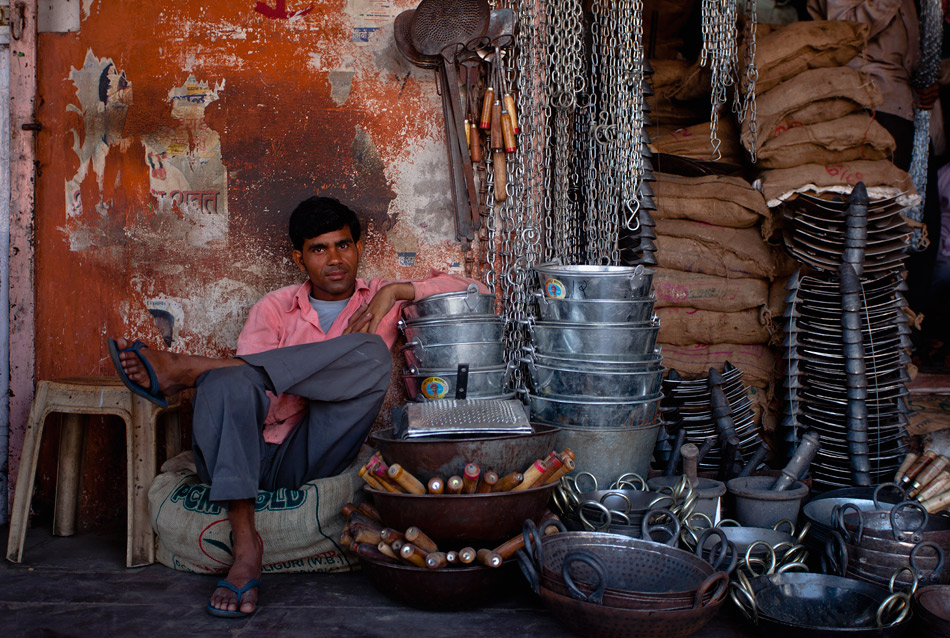
Undecided! Do I smile.. or not? A hardware shop in Jaipur’s old city.
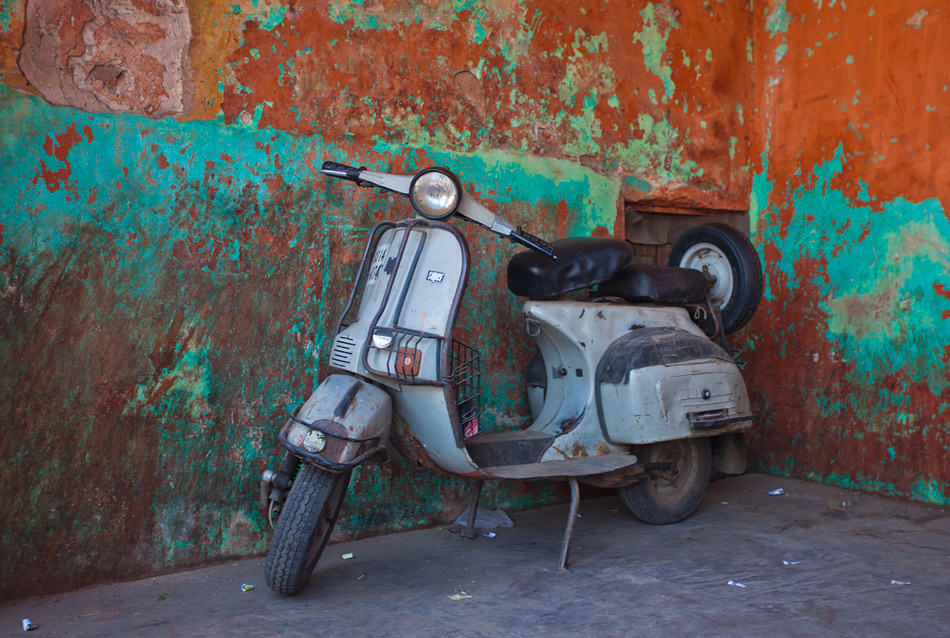
The scooters, once believed to be extinct! Now, the old ones are being brought back on the road and new releases are coming out from factories as well. A case of classics. Photographed somewhere not too faraway from the hardware shop above.

Jaipur’s fetish with pigeons may not be as legendary as its forts and palaces. But it should be. Everyone, everywhere wants to feed them and see them proliferate.
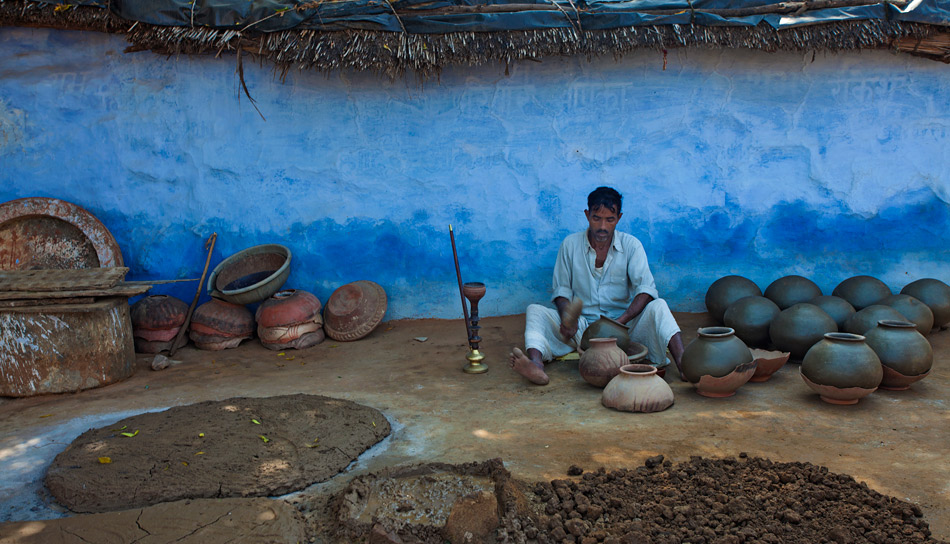
Somewhere on the way from Jaipur to Agra, mud pots still rule over steel utensils.

..and the good old tailors are preferred over ready-to-wear stuff.
Delhi’s Chandni Chowk is another area where, similar to Varanasi, a small place is home to amazing diversity. Ever heard of anything you wanted that is not available in Chandni Chowk?
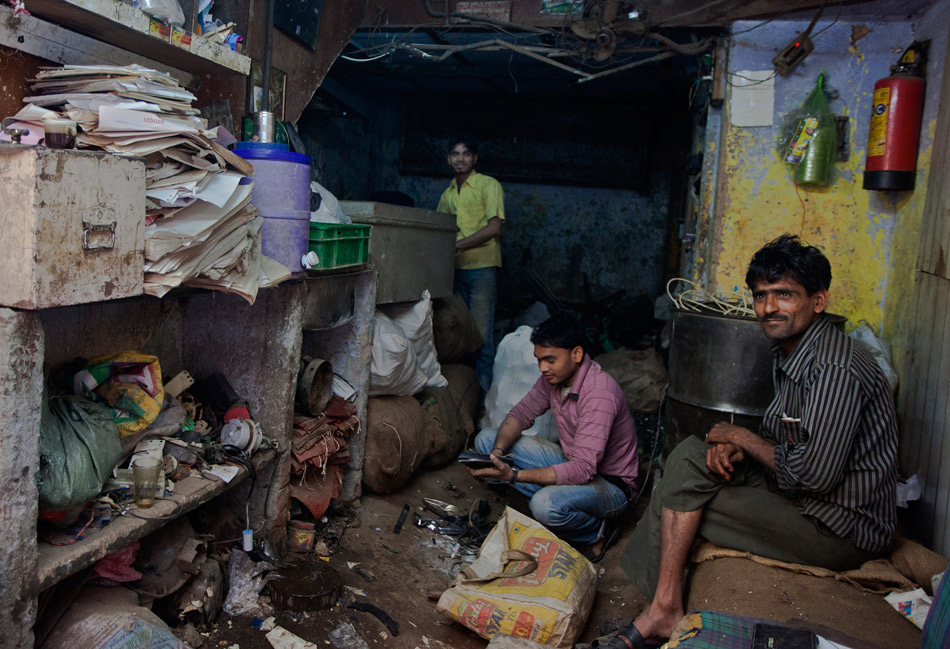
A scrap yard.. Everything can be recycled.
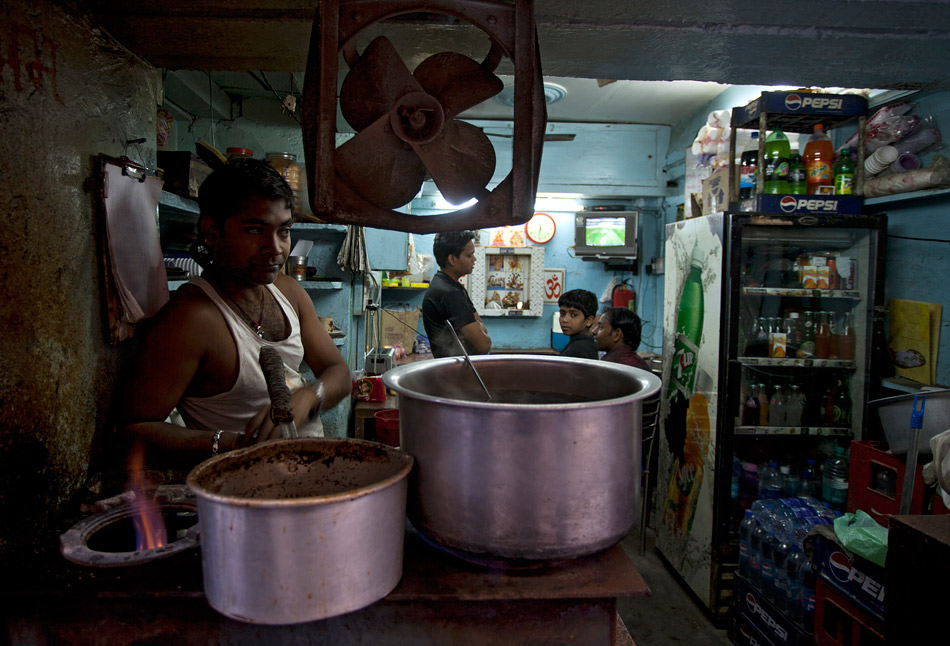
Gadisar Lake, Jaisalmer, and the traditional pavilions (chatri) around it set against a deep blue sky.

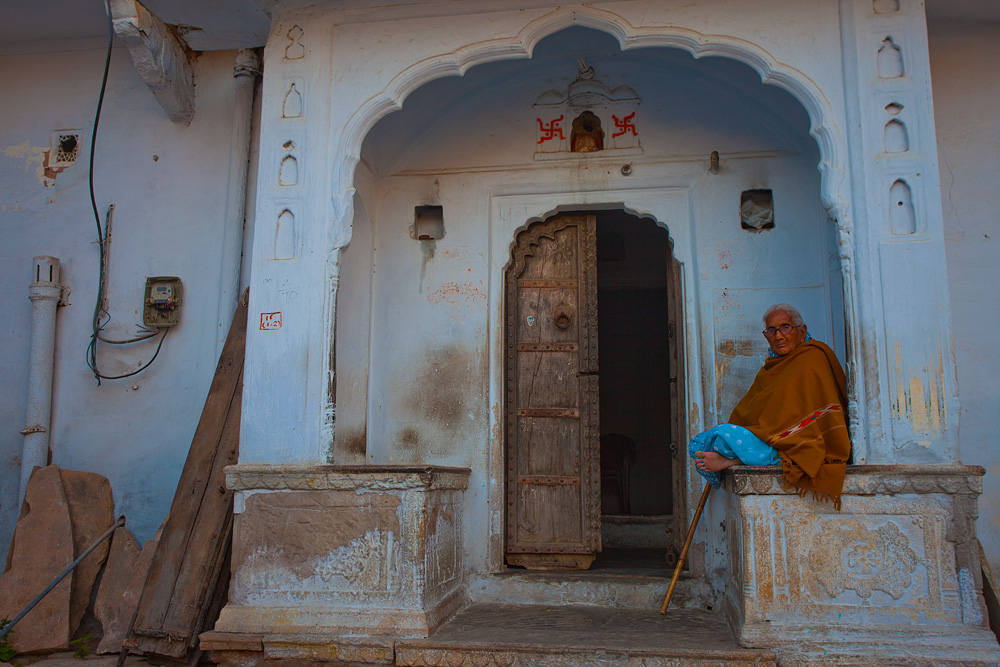 Strolling through the lanes outside the touristy quarters of Jaipur, we entered a small lane crowded with houses. As I have occasionally seen in these parts of the country, the lane expanded into a spacious quadrangle surrounded by tightly packed houses. A few cars were parked at the center. A cow–there are few places where you won’t find one–tied under a tin roof stared at us uninterestedly. An elderly lady sat on the veranda of her house, spending the evening in solitude. I first thought the house was a temple, thanks to its decorative arch and a tiny altar above the door with bright saffron swastikas on each side. The lady responded in affirmative when I requested her permission for a photograph, but did not say much else.
Strolling through the lanes outside the touristy quarters of Jaipur, we entered a small lane crowded with houses. As I have occasionally seen in these parts of the country, the lane expanded into a spacious quadrangle surrounded by tightly packed houses. A few cars were parked at the center. A cow–there are few places where you won’t find one–tied under a tin roof stared at us uninterestedly. An elderly lady sat on the veranda of her house, spending the evening in solitude. I first thought the house was a temple, thanks to its decorative arch and a tiny altar above the door with bright saffron swastikas on each side. The lady responded in affirmative when I requested her permission for a photograph, but did not say much else.
In the meanwhile, we had caught the attention of a bunch of elderly men who sat in a circle and whiled away the evening discussing politics. One of them started talking to us and immediately, without our realization, a connection was established between the visitors and the locals. Ice was broken and conversations flowed freely. The strangers at the quandrangle, who had now transformed into our hosts in a matter of few seconds, took turns to introduce themselves. One was a retired government official, one was a priest and another one was a musician. The eldest man in the group, who was a generation senior to everyone else, remained silent and watchful. We all were sitting on the veranda of the musician’s family, which had once served the kings of Jaipur. They were proud about their achievements and took us into their house to show the instruments they possessed (a harmonium, a flute).
And then, as it normally happens, questions were asked about our professions and our whereabouts. Of course, at the end we were asked to stay on for a cup of tea.
As a photographer who often encounters and speaks to strangers all over the country, I have seen people react to our cameras in a very predictable way. They usually come in two extremes – very friendly or very unwelcoming. The more touristy a place gets, the more camera-toting people a place sees, the more likely that the encounters are the latter kind. The farther you get, the more you move off the highway, it is more likely that you find friendlier people. And then there are always hidden places just round the corner from a well-known place where you still see hat friendly smiles not compromised.
It is perhaps a natural progression that happens to people who often find themselves pointed with a camera, more often than not unsolicited. At first, one may find it charming that they are being photographed. But as it becomes a common practice, and as the photographers attempt to capture them more in the form of an exhibit from a distance than a fellow human being, it is expectable that the people get distressed or want something in return for their contribution. But I am digressing; let me come back to our encounters in Jaipur.
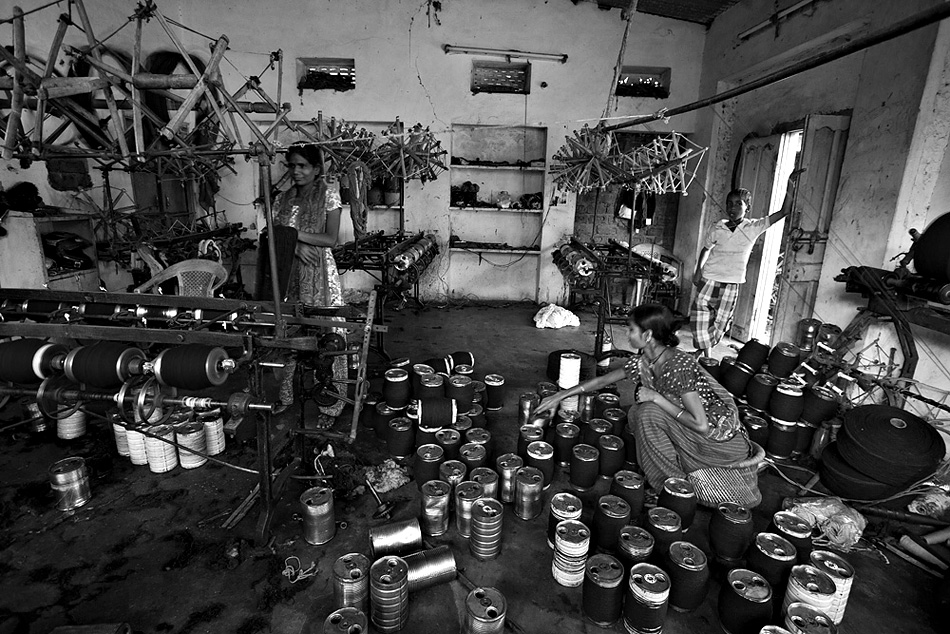
A factory producing yarns.
It was one of those corners just outside the touristy attractions of Jaipur, where we found these friendly men who were very welcoming. After exchanging contact details and a promise to email photographs (to granddaughter’s email id, which they referred to as ’email number’), we headed out in search of more of this Jaipur beyond its well-known monuments. In the next one hour, we encountered frolicking children, women carrying water from public taps and a small factory producing yarns.

Life outside Hawa Mahal, Jaipur.
Our day of gallivanting in Jaipur was made of a series of such encounters that stayed in memory. We began as everyone did, peeping through Hawa Mahal and walking into City Palace, but kept an eye on the more down-to-earth encounters. The bustling life outside Hawa Mahal has always been one of my favourites, where the pink edifice offers a grand background for rickshaw pullers, vegetable vendors, bicyclists and every other type of people in a city that still breathes its past.
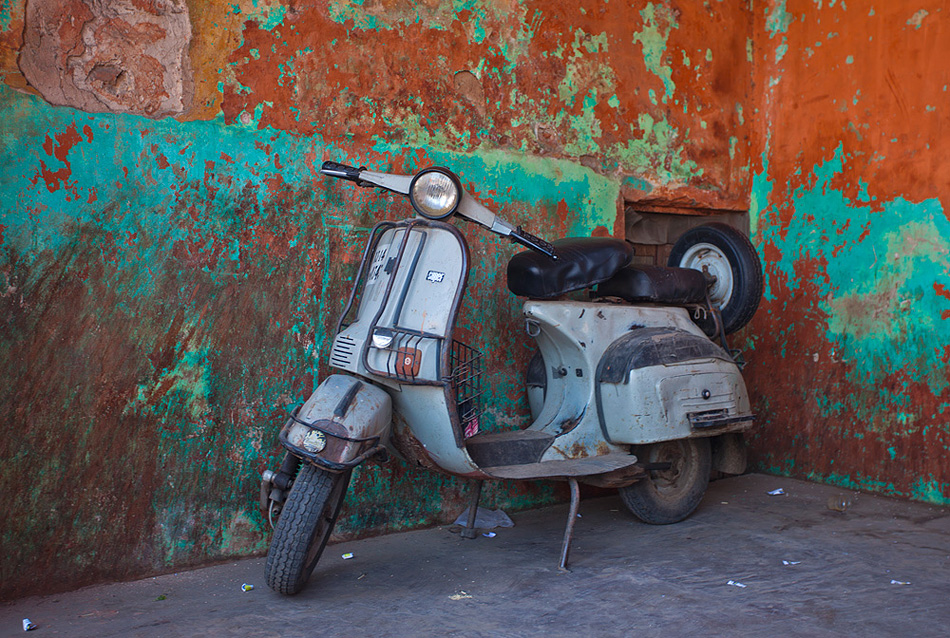

Streets and markets of Jaipur
Later in the day, we walked through the local markets that are not very far from the heritage site,s but are rarely seen by the hoards of tourists flocking the monuments. The variety and colours in the shops were overwhelming. Here too, people were welcoming and were happy to stand in front of the camera. My encounters of the day included a jeweler with a nice long beard, a hardware store owner with a smug smile, a colourful display of flowers and a scooter parked in front of an old wall with paint peeling off.
We had begun that day with the cameras on the shoulders, passing through Jaipur’s well-known sights like the Hawa Mahal and Gaitor, but keeping the eyes open to everything around them. As the day progressed, we saw ourselves spending less and less time at the monuments, dwelling more in people interactions and straying towards places less frequented. It was one such walk along the lanes outside the walls of the old city, which had taken us to those friendly group of elders at the end of the day.





















